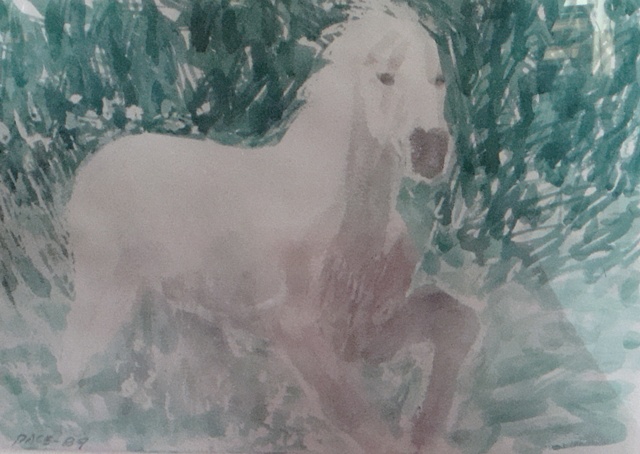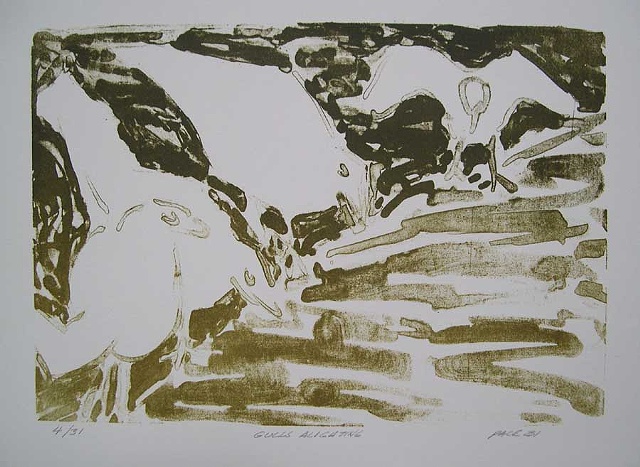Stephen Pace
Stephen Pace (1918-2010) - Artists - Dowling Walsh
Born in Charleston, Missouri, Stephen Pace grew up in Indiana, where his parents operated a grocery store and then a farm. Pace began drawing as a young boy and at the age of seventeen initiated his formal art training by studying drawing and watercolor methods with W.P.A. artist Robert Lahr. During World War II, he served in England and France, honing his skills by painting views of local scenery. While in Paris, Stephen Pace met the collector Gertrude Stein and on several occasions visited her home on the rue de Fleurus.
Stephen Pace’s first fame as a painter came from his abstractions. Pace had studied with Hans Hofmann in the late 1940s and found the renowned German-born painter-teacher’s exuberant attitude toward making art inspiring. “You could do whatever you wanted to do,” the artist recalled in the 2008 film profile Stephen Pace: Maine Master.
In that same profile Pace admitted that from the beginning of his life as a painter he “always liked big brushes and splashing paint.” Caught up in the vibrant New York City art scene of the 1950s, hobnobbing with the likes of Kline and de Kooning, he became a major figure in the second wave of Abstract Expressionism. He could, as one critic put it, “gesture with the best of them.” His work appeared in numerous annuals at the Whitney, and he had solo shows in some of the most respected galleries of the day.
The examples of that earlier work in this exhibition present Pace at his most dynamic. Here are lively explorations of abstract idioms, from planar compositions, which reflect Hofmann’s teachings, to biomorphic studies that call to mind the work of Arshile Gorky.
According to art historian Martica Sawin, author of the definitive book on the painter, Pace first came to Maine in 1953, to visit Monhegan. On that trip he happened upon Deer Isle. It was “love at first sight” he told Bruce Brown, curator of Maine Coast Artists, on the occasion of his exhibition there in 1993.
Stonington, that magnet to an amazing array of artists stretching from John Marin and the Zorachs to Jon Imber and Jill Hoy, became the center of his artistic universe. He and his wife and muse, Pam, camped there nearly every summer before buying a house in 1973 and becoming part of the community.


